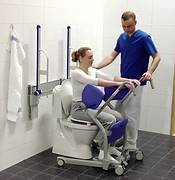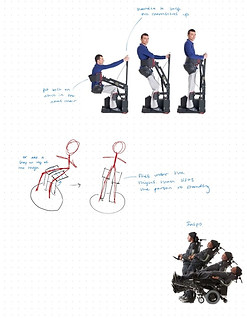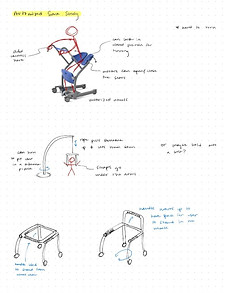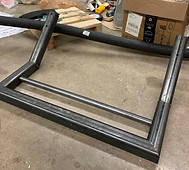HOME TRANSFER ASSIST DEVICE
PROJECT OBJECTIVES
For the ME "Senior Design Project" class, I worked with a team of mechanical engineering students for three months to design and prototype a medical device for clients at Elevated LLC. The device needed to help people transfer from a wheel chair to another location. The clients approved of the design and submitted for a patent.
MY CONTRIBUTION
-
User interviews and market research
-
Most CAD modeling (done in OnShape)
-
Design and construction of the arm

PROBLEM DEFINITION
Research the mechanics of this process. We want to understand exactly how people stand and how caregivers help them pivot.


Standing
Pivoting
Problem Statement:
People with limited mobility require assistance with transfers (standing and pivoting). Hiring a caregiver can be expensive and users value their independence. All current devices that assist with this process require a caregiver.
Key Requirements:
1. Connect and transfer time is less than 5 min
2. Supports a 50% of the weight of a user (up to 300 lb)
3. Powered via standard 15 amp outlet
4. Lifting the user from the trunk not the arms
5. Room for donning and doffing
MARKET

Hoyer Lift

Sera Steady

Invacare Get-U-Up
Takeaways
-
All require a caregiver to operate
-
Either a passive system or an automated system that large
IDEATION



Sketches of some of my ideas and observations
We evaluated all ideas using tools like weighted objective tables and decision matrices. We determined that the most effective idea would be to use a boom arm with a linear actuator for lifting.
DESIGN
Simple physical prototyping with PVC. This helped us understand the dimensions of the device and find what's comfortable for the user

First Design
-
Foot print is too large to fit in a typical bathroom
-
Can't transport easily
-
Gait belt interface would hit the user in the face


Second Design Features
-
Fits through standard doorways
-
Removeable kick-down wheels for easy transport
-
Various gait belt and eye hook settings to allow each user to personalize the tension in the lift
-
Controls for both motions easily accessible from the device's handle
-
Ergonomic Shin rest to increase stability and reduce the load on a user's legs

After refining the design in CAD, we began manufacturing parts. I cut and welded the arm from steel tubing.
FINAL DESIGN
Final prototype at the design showcase

Assist Device with callouts

Requirement Evaluation


